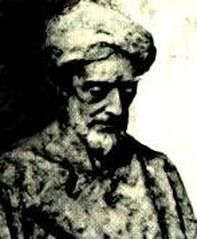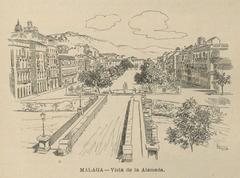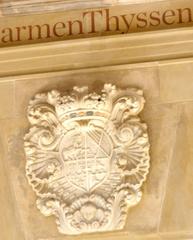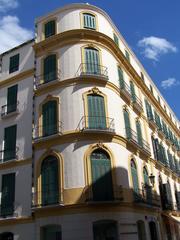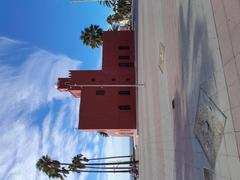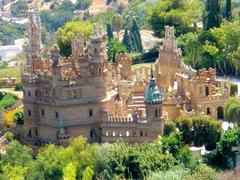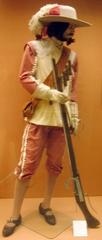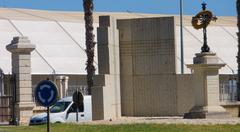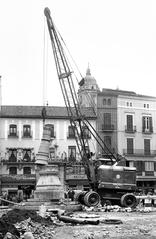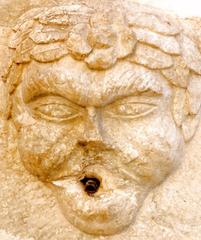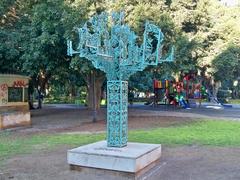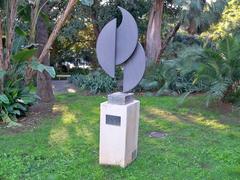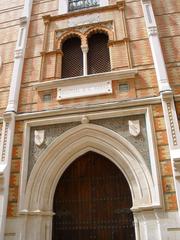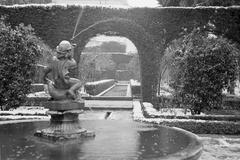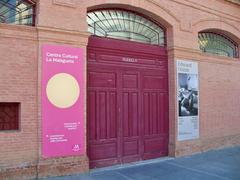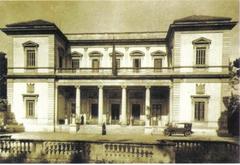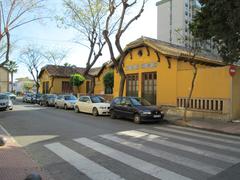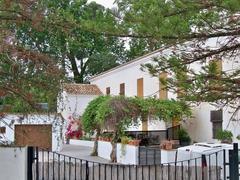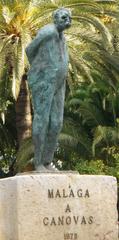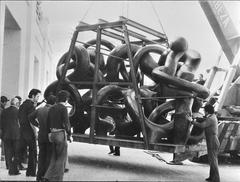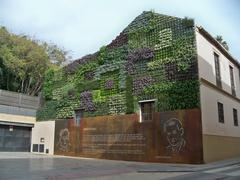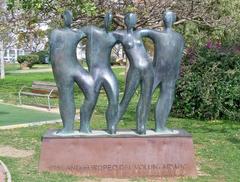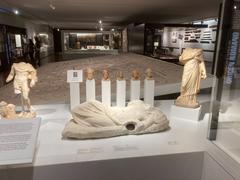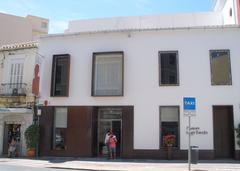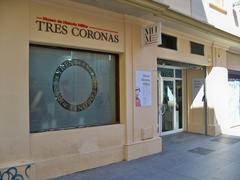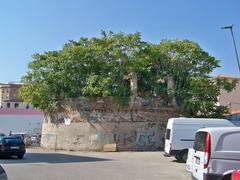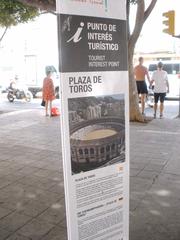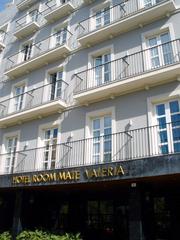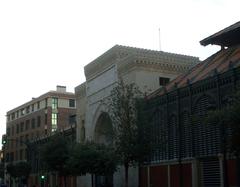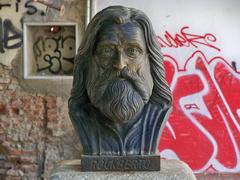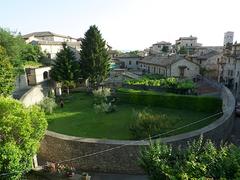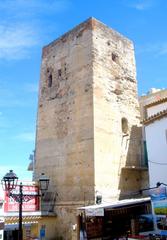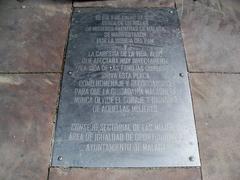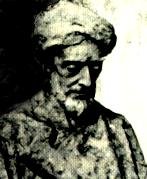
Visiting the Monument to Solomon Ibn Gabirol in Málaga, Spain: Guide and Tips
Date: 14/06/2025
Introduction
In the heart of Málaga’s vibrant historic center stands the Monument to Solomon Ibn Gabirol, a tribute to one of the medieval world’s most influential Jewish poets and philosophers. Born around 1021 in Málaga, Ibn Gabirol—also known by his Latinized name, Avicebron—made enduring contributions to philosophy and Hebrew poetry that continue to inspire across religious and cultural boundaries. This comprehensive guide explores the monument’s historical significance, artistic features, visiting information, and its place within Málaga’s rich multicultural legacy.
For further details and visitor resources, refer to the Official Málaga Tourism Website, the Solomon Ibn Gabirol Wikipedia page, and the Malaga Tourism post on Ibn Gabirol statues.
Contents
- Historical Background: Solomon Ibn Gabirol
- Artistic Vision and Monument Creation
- Symbolism and Cultural Resonance
- Location, Accessibility, and Visiting Information
- The Judería and Jewish Heritage in Málaga
- Visitor Tips and Photographic Highlights
- Nearby Attractions
- Frequently Asked Questions (FAQ)
- Conclusion
- Sources and Further Reading
Historical Background: Solomon Ibn Gabirol
Early Life and Intellectual Formation
Solomon Ibn Gabirol was born in Málaga during the culturally flourishing era of Al-Andalus. His family, originally from Córdoba, found refuge in Málaga after political upheavals. Despite being orphaned young, Ibn Gabirol’s prodigious talent drew the support of influential patrons, allowing him to study Talmud, Hebrew grammar, philosophy, and astronomy. His formative years in Málaga deeply influenced his later work, and he often referred to himself as “the Malagueño” in his poetry (malagaturismo.es).
Literary and Philosophical Legacy
Renowned for both his poetry and philosophical writings, Ibn Gabirol authored over a hundred poems and the major philosophical treatise “Fons Vitae” (“The Source of Life”). His doctrine of Universal Hylomorphism—asserting that all things, even the soul and intellect, are composed of matter and form—had a lasting impact on Jewish, Christian, and Islamic thought. His works remain central to Jewish liturgy and have been widely translated (Sur in English).
Artistic Vision and Monument Creation
The Monument to Solomon Ibn Gabirol was created in 1969 by American sculptor Hamilton Reed Armstrong. Crafted in bronze, the statue depicts Ibn Gabirol in a contemplative seated pose, symbolizing his introspective spirit and intellectual depth. The statue’s gaze is directed toward the Alcazaba fortress, visually connecting Málaga’s Jewish, Muslim, and Christian heritage (Málaga Hoy).
A plaque at the base honors him as “Poeta y Filósofo” (Poet and Philosopher), and includes a poetic excerpt reflecting his quest for spiritual wisdom.
Symbolism and Cultural Resonance
The monument’s prominent placement on Calle Alcazabilla, facing both the Roman Theatre and the Moorish Alcazaba, anchors Ibn Gabirol’s legacy in the very fabric of Málaga’s multicultural history. Its surroundings evoke the city’s role as a crossroads for Jewish, Christian, and Muslim cultures during the Middle Ages. The statue is not only a work of art but a focal point for memory, reflection, and intercultural dialogue (Patrick Comerford).
In 2021, to mark the millennium of Ibn Gabirol’s birth, the monument was relocated for greater visibility and public engagement, highlighting Málaga’s ongoing commitment to celebrating its diverse heritage (Málaga Hoy).
Location, Accessibility, and Visiting Information
- Location: Calle Alcazabilla, Málaga, Spain—adjacent to the Alcazaba fortress and Roman Theatre
- Visiting Hours: Open 24/7 as an outdoor public monument
- Admission: Free; no tickets required
- Accessibility: Flat, paved paths suitable for wheelchairs and strollers
- Transportation: Easily reached by city bus (lines 1, 36, C2), taxi, or on foot from major city landmarks
- Nearby Amenities: Restrooms and restaurants (including Bodega El Pimpi) are located nearby
The area is pedestrian-friendly and offers a tranquil environment with seating and greenery, making it a restful escape amidst the city’s bustle (malagaturismo.es).
The Judería and Jewish Heritage in Málaga
The monument is an essential stop on the route exploring Málaga’s Jewish heritage. The nearby Judería (Jewish quarter) is being revitalized, with interpretive centers and plans for a Sephardic museum and synagogue. The Ben Gabirol Visitor Reception Center at 70 Calle Granada provides exhibits and resources on Ibn Gabirol’s life and Málaga’s Jewish history (malagaturistica.com).
Visitor Tips and Photographic Highlights
- Best Time to Visit: Early mornings or late afternoons for pleasant weather and optimal photography lighting
- Combine Visits: The monument is ideally visited alongside the Alcazaba, Roman Theatre, and Picasso Museum—all within walking distance
- Photography: The statue, with the Alcazaba in the background, is highly photogenic, especially during golden hour
- Events: Check local listings for poetry readings or cultural events at the site, especially around Ibn Gabirol’s anniversary
Nearby Attractions
- Alcazaba Fortress: Moorish citadel with panoramic city views
- Roman Theatre: Ancient amphitheater at the foot of the Alcazaba
- Picasso Museum: Celebrating Málaga’s most famous modern artist
- Cathedral of Málaga: Renowned for its Renaissance architecture
- Carmen Thyssen Museum: Focused on 19th-century Spanish art
Frequently Asked Questions (FAQ)
Q: What are the visiting hours for the monument?
A: The monument is outdoors and accessible 24 hours a day, year-round.
Q: Is there an entrance fee?
A: No, visiting the monument is free.
Q: Is the monument wheelchair accessible?
A: Yes, the area is paved and suitable for wheelchairs and strollers.
Q: Are guided tours available?
A: Several local operators and the Ben Gabirol Visitor Reception Center offer guided tours.
Q: What other attractions are nearby?
A: The Alcazaba, Roman Theatre, Picasso Museum, and Málaga Cathedral are all within walking distance.
Conclusion
The Monument to Solomon Ibn Gabirol stands as a powerful testament to Málaga’s multicultural past and the enduring influence of a philosopher-poet whose works bridged Jewish, Islamic, and Christian traditions. Accessible, central, and visually striking, it invites visitors to reflect on the city’s layered history and the universal quest for knowledge and understanding.
To enrich your visit, consider exploring nearby historical sites, attending cultural events, and making use of digital resources like the Audiala app for guided tours and updates. Celebrate the legacy of Ibn Gabirol by engaging with Málaga’s vibrant heritage—where history, art, and intercultural dialogue come alive.
Sources and Further Reading
- Official Málaga Tourism Website
- Solomon Ibn Gabirol Wikipedia
- Málaga Hoy: Monument to Solomon Ibn Gabirol
- Malaga Turismo: Ibn Gabirol Statues
- Malagaturistica: Esculturas de Málaga
- Sur in English: Gabirol’s Legacy
- Patrick Comerford: Málaga Statue Remembers Solomon Ibn Gabirol
- Waymarking: Solomon Ibn Gabirol, Calle Alcazabilla, Málaga, Spain
- Spanish Sabores: The Ultimate Travel Guide to Málaga
